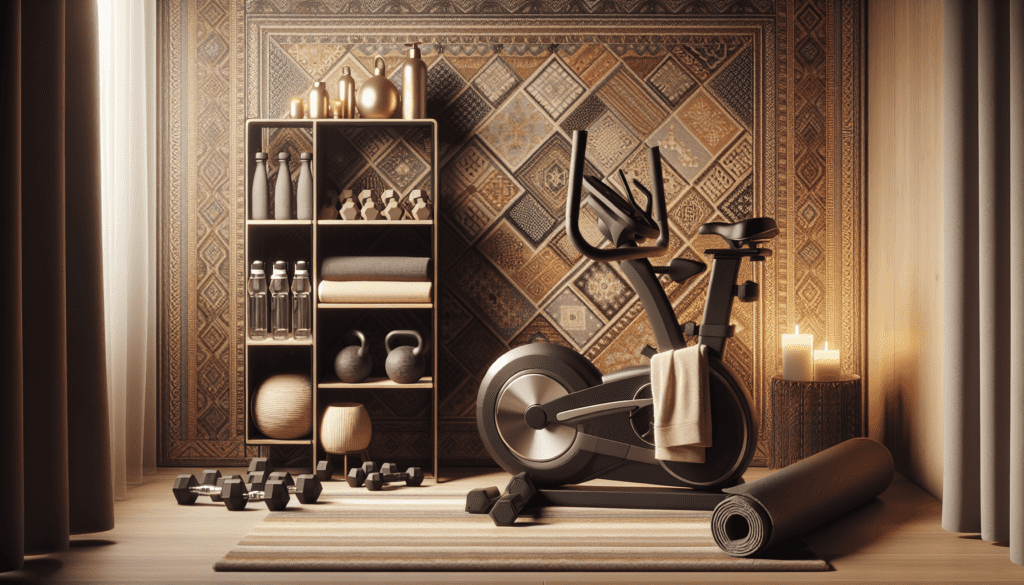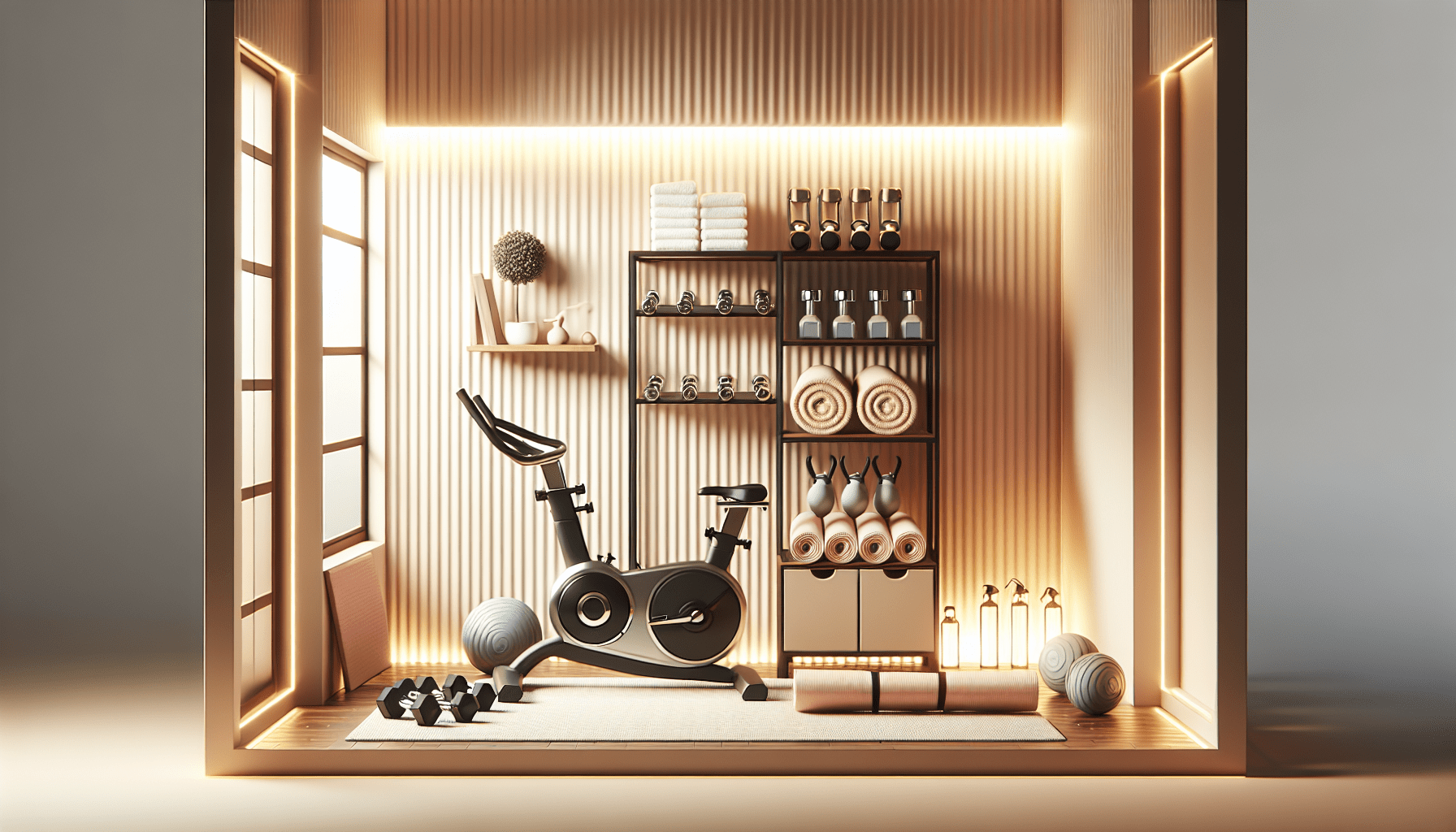Are you thinking about creating a dedicated space in your home for fitness, but unsure where to start? Setting up a home fitness bar can be a great solution, providing you with a convenient spot to keep all your workout essentials organized and ready to use. This article will guide you through everything you need to know to create an effective and enjoyable workout space at home.

The Basics of a Home Fitness Bar
When starting your own home fitness bar, it’s important to grasp the basics. Essentially, a home fitness bar is a space within your house where you can store and use equipment for your daily workouts. It doesn’t require a lot of space, and with the right equipment, you can have a versatile fitness hub.
The Space You Need
You don’t need a huge area to create an effective fitness bar at home. A small room or even a dedicated corner in your living room or garage can work perfectly. The key is to utilize the space efficiently. Ensure you have enough room to move around and perform exercises without restrictions.
Essential Equipment
To get started, you’ll need some basic equipment. Here’s a simple table to help you understand what items might be most important for your home fitness bar setup:
| Equipment Type | Examples | Purpose |
|---|---|---|
| Cardio Machines | Treadmill, stationary bike | Improve cardiovascular health, burn calories |
| Strength Equipment | Dumbbells, resistance bands | Build muscle, enhance strength |
| Flexibility Gear | Yoga mats, foam rollers | Improve flexibility, balance, and core strength |
Planning Your Setup
Selecting the Right Spot
Identifying the right spot in your home is crucial. You’ll want a place that is out of the way but still easily accessible. It’s also important to consider the type of flooring — carpet might not be ideal for heavy equipment, while hardwood floors can be vulnerable to scratches.
Securing Equipment
Safety should never be an afterthought. Ensure all your equipment, especially heavy items like weights, are stored securely. Wall-mounted racks for weights and hooks for resistance bands can keep your space safe and uncluttered.
Ergonomics and Layout
Plan the layout of your equipment carefully. You’ll want to move freely without having to constantly adjust your setup. Arrange your fitness bar so that fetch-and-carry operations are minimized, and there is a natural flow between different types of workouts.
Choosing the Right Equipment
Cardio Equipment Choices
Here’s a breakdown of some common cardio machines:
Treadmills
Ideal for walkers and runners alike, a treadmill can be a staple in your fitness bar. Features to look for include programmable settings, incline options, and an emergency stop function.
Stationary Bikes
A compact choice, these are perfect for intense cardio workouts with minimal joint strain. Check for comfortable seating, adjustable resistance levels, and footprint, ensuring it fits comfortably in your allocated space.
Strength Training Tools
Free Weights
Dumbbells and barbells are great for strength building. They are available in a variety of sizes and materials, so selecting the correct type according to your strength level is crucial.
Weight Benches
An adjustable bench adds versatility to strength training, allowing you to perform a variety of exercises targeting different muscle groups.
Flexibility and Recovery Equipment
Yoga Mats
Essential for any stretching or floor-based exercises, they provide a comfortable and safe surface.
Foam Rollers
Great for self-massage and reducing muscle tension after workouts.
Maintaining Your Home Fitness Bar
Regular Cleaning
Keep your fitness equipment clean and hygienic. Regular wiping down of machines and laundering of reusable towels and yoga mats will help maintain a fresh environment.
Equipment Maintenance
Regular checks and maintenance ensure longevity and functionality. Check equipment for loose parts and wear signs, and follow the manufacturer’s instructions for care and maintenance.
Keeping Things Interesting
Rotate or upgrade your equipment occasionally to keep your routines challenging and engaging. This not only prevents boredom but also continuously adapts to your evolving fitness needs.

Health and Safety Considerations
Setting up at home means you need to be extra vigilant about safety. Here are some key areas to focus on:
Proper Installation
Ensure all equipment, especially heavy or complex machines, are installed correctly. It might be worth hiring a professional to ensure everything is set up safely.
First Aid and Emergency Procedures
Keep a first aid kit nearby and familiarize yourself with basic sports injury management. It is also wise to have emergency contact numbers handy.
Building a Routine
Setting Goals
Determine what you want to achieve with your home workouts, whether it’s improving strength, losing weight, or enhancing overall fitness. This will guide your choice of equipment and workout routines.
Creating a Schedule
Consistency is key. Plan a regular workout schedule that fits into your daily routine. Varying your workouts can help keep you motivated and target different fitness areas.
Setting up your home fitness bar is all about making your home a sanctuary for health and well-being. With the right setup, equipment, and attitude, you’ll pave the way for a fitter, healthier you. Enjoy the convenience of having everything you need at your fingertips and remember, the most challenging part of any workout is starting. So take the first step today and keep moving forward!

